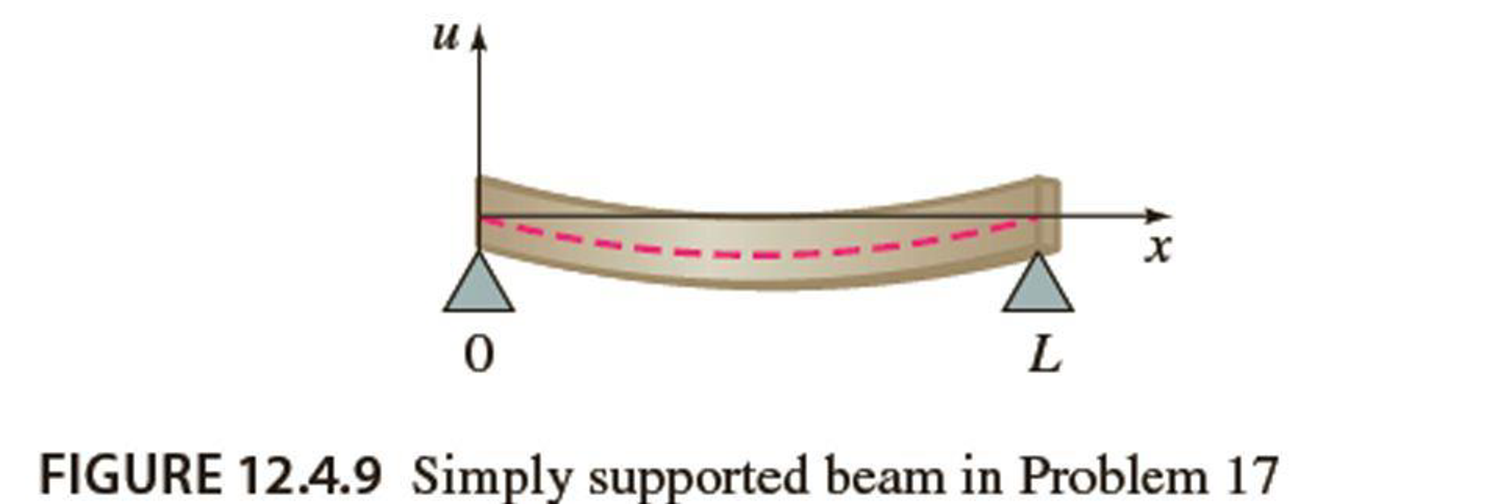
The transverse displacement u(x, t) of a vibrating beam of length L is determined from a fourth-order partial differential equation
If the beam is simply supported, as shown in Figure 12.4.9, the boundary and initial conditions are
Solve for u(x, t). [Hint: For convenience use λ = α4 when separating variables.]

Trending nowThis is a popular solution!

Chapter 12 Solutions
Differential Equations with Boundary-Value Problems
- Please help with a detailed explaination how to get the answerarrow_forwardMATLAB. Awnser written questions (*) in the comments. Null, Rank, and most functions outside of rref() and disp() are not allowed!arrow_forwardMATLAB. Awnser written questions (*) in the comments. Null, Rank, and most functions outside of rref() and disp() are not allowed! Solutions must be given manually! Elementary form means to reduce to RREF manually, without rref(). Please see other attached image for explanationarrow_forward
- In ΔEFG, e = 520 inches, ∠E=26° and ∠F=107°. Find the area of ΔEFG, to the nearest 10th of an square inch.arrow_forwardIn ΔXYZ, ∠Y=90° and ∠X=25°. ∠ZWY=73° and XW=7.2. Find the length of WY to the nearest 100th. Figure not necessarily drawn to scale. XYWZ25°73°7.2?arrow_forwardIn ΔABC, a = 380 inches, ∠A=72° and ∠B=9°. Find the area of ΔABC, to the nearest 10th of an square inch.arrow_forward
 Linear Algebra: A Modern IntroductionAlgebraISBN:9781285463247Author:David PoolePublisher:Cengage Learning
Linear Algebra: A Modern IntroductionAlgebraISBN:9781285463247Author:David PoolePublisher:Cengage Learning
